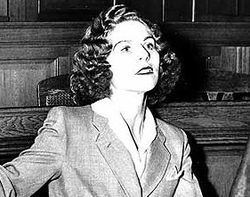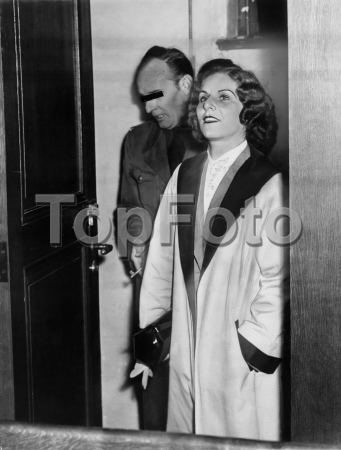Name Stella Kubler | Full name Stella Kübler-Isaacksohn | |
 | ||
Jüdische „Greifer" im Berlin der NS-Zeit
Stella Kübler-Isaacksohn née Goldschlag (10 July 1922 – 1994), was a German Jewish woman who collaborated with the Gestapo during World War II, exposing and denouncing Berlin's underground Jews.
Contents
- Jdische Greifer im Berlin der NS Zeit
- Early life
- Going underground and collaboration
- Post war
- Personal life
- References

Early life
She was born Stella Goldschlag and raised in Berlin as the only child in a middle-class, assimilated Jewish family. After the 1933 seizure of power by the Nazis, she, like other Jewish children, was forbidden to go to a public school, so she attended the Goldschmidt School, set up by the local Jewish community. At school, she was known for her beauty and vivacity.
The family fell on hard times when Jews were purged from positions of influence and her father lost his job with the newsreel company Gaumont. Her parents attempted to leave Germany after Kristallnacht in 1938 to escape the Nazi regime, but were unable to get visas for other countries. Stella completed her education in 1938, training as a fashion designer at the School of Applied Art in Nurnbergerstrasse.
Going underground and collaboration

In 1941, she married a Jewish musician, Manfred Kübler. They had met when both were working as Jewish forced-labourers in a war plant in Berlin. In about 1942, when the large deportation programme of Berlin Jews into extermination camps began, she disappeared underground, using forged papers to pass as a non-Jew — owing to her blonde-haired, blue-eyed 'Aryan' appearance.

In the spring of 1943, she and her parents were arrested by the Nazis. Stella Kübler was subjected to torture. In order to avoid deportation of herself and her parents, she agreed to become a "catcher" (German: Greiferin) for the Gestapo, hunting down Jews hiding as non-Jews (referred to as "U-Boats"). She was promised a salary of 300 Reichsmark for each Jew that she betrayed. She proceeded to comb Berlin for such Jews and, as she was familiar with a large number of Jewish people from her years at her segregated Jewish school, Kübler was very successful at finding her former schoolmates and handing their information over to the Gestapo, while posing as a U-Boat herself. Some of Kübler's efforts to apprehend Jews in hiding included promising them food and accommodation, meanwhile turning them over to the Nazi authorities; she also followed clues provided to her by the Gestapo. The data concerning the number of her victims varies, depending on different sources of information, from between 600 and 3,000 Jews. Stella Kübler's charisma and striking good looks were a great advantage in her pursuit of underground Jews. The Nazis called her "blonde poison". She is mentioned in The Forger, Cioma Schonhaus' 2004 account of living as an underground Jew in Berlin, and also Berlin at War (Roger Moorhouse, 2010).
Despite her collaboration, the Nazis eventually broke their promise of sparing the lives of Stella Kübler's parents. They were deported to the Theresienstadt concentration camp, where they were killed. Her husband, Manfred, was deported in 1943 to Auschwitz, along with his family. Nonetheless, she continued her work for the Gestapo until March 1945. During this time, she met and married her second husband, Rolf Isaaksohn, also a Jew and Nazi collaborator and fellow Greifer.
Post-war
At the end of the war she went into hiding, but was found and arrested by the Soviets in October 1945 and sentenced to ten years' camp detention. Afterwards she moved to West Berlin. There she was again tried and convicted, and sentenced to ten years' imprisonment. However, she did not have to serve that sentence because of the time already served in the Soviet prison.
After the war, Kübler converted to Christianity and became an "open anti-semite" (self-hating Jew).
In 1992, Peter Wyden, a Berlin schoolmate whose family had been able to get visas for the US in 1937 and who later learned about Stella's role as a Catcher while he was working for the U.S. Army, wrote a biography of Kübler.
Personal life
Stella Kübler was married five times: Following the deportation of her first husband, Manfred Kübler, she married fellow Jewish collaborator and Greifer Rolf Isaaksohn on October 29, 1944. After the war, she was married to three non-Jews, starting with Friedheim Schellenberg. Her last husband died in 1984.
Kübler committed suicide in 1994 by throwing herself out the window of her Berlin apartment. Stella had one daughter, Yvonne, who was taken from her and who immigrated to Israel. (source: Peter Wyden's 1992 biography of Stella which includes a photo of Yvonne.)
